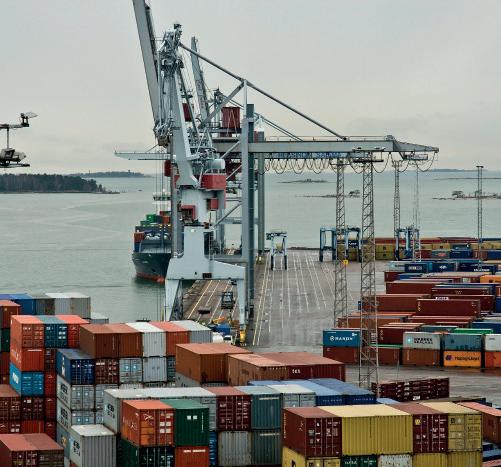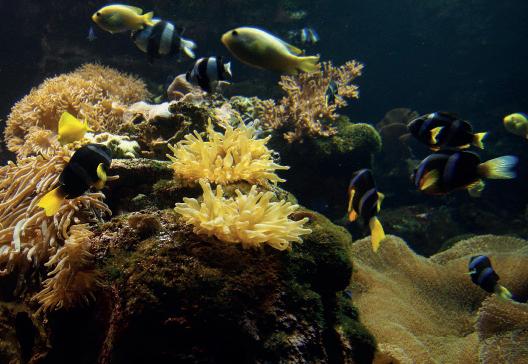
3 minute read
Climate competition
by Exeposé
image of the man. He has no need to finance and run these programmes of aid through the Bill and Melinda Gates Foundation nor has he any particular connection to Kenya or Africa as a whole. As ever his reasoning for the establishment of the foundation, he explains, is a rational one: what to do with an amount of wealth that is unneccesary? Invest in supporting the Global South. Yet this is not the rationality of all the billoinaires in the world. It speaks to the quality of Gates character that he is neither carrying out philanthropic work for attention nor out of some deep-rooted guilt. It is his genuine intrigue and drive to innovate that underlines all his work from Silicon Valley to Sub-saharan Africa.
THE DISCUSSION AROUND HIS PHILANTHROPIC WORK PROVIDES A TELLING IMAGE OF THE MAN
Advertisement
We may not have witnessed Bill Gates mask slip to reveal some scaley skin nor his world domination plan revealed, but this interview does provide a look into the life and current work of the man. As he closes in on 70, he shows no signs of cutting his work back nor any lowered hunger for innovation or success of his work.
‘Amol Rajan Interviews, Bill Gates’ aired on 3rd February and is available on BBC iPlayer.
Oliver Lamb, Deputy Editor, asseses the plan to decarbonise the UK's maritime sector
ROUGHLY 90 per cent of the world’s trade is borne by the sea. International shipping produces a billion tonnes of carbon dioxide every year, representing about three per cent of the global total. Cruise ships carried almost 30 million passengers in 2019. Just one large cruise ship has a larger carbon footprint than 12,000 cars. Those numbers give a sense of the scale of the task facing the entrants of the Zero Emissions Vessels and Infrastructure competition.
Overseen by Innovate UK, which has run similar ventures in the past, the competition was announced by the British government on 6th February. At stake is a £77 million government investment, which successful projects will show they can use to launch a zero-emissions vessel by 2025 at the latest.
The British government is committed to cutting the UK’s carbon emissions to net zero by 2050. Last year the UK Shipping Office for Reducing Emissions (UK
SHORE) was set up within the Department for Transport, and it is this programme of which the ZEVI competition forms a part. Mid-century is also the deadline set for achieving net zero by the International Chamber of Shipping, which represents 80 per cent of the world’s merchant tonnage, and the Cruise Lines International Association. Among the possible power sources available to entrants to the ZEVI competition are battery power, hydrogen and ammonia. Of the three, ammonia — a compound of hydrogen and nitrogen — in particular is seen as a promising green shipping fuel. In the International Energy Agency’s net zero global emissions scenario, ammonia meets half of the shipping industry’s fuel requirements in 2050; biofuels supply 20 per cent and hydrogen and fossil fuels 15 per cent each.
Ammonia is more energy-dense than batteries or hydrogen, meaning it takes up less storage space. Since it is widely used to make plastic, cleaning products and fertiliser, much of the infrastructure needed to produce, store and transport ammonia is already in place, including at around 130 ports across the world. And, of course, ammonia does not produce carbon dioxide.
One slight hitch is that ammonia production itself is responsible for one to two per cent of the world’s carbon emissions. Efforts are underway to switch to green forms of manufacturing. Another concern is that ammonia, when leaked in sufficient quantities, is lethal to humans and marine life.
It also produces air pollutants and small amounts of the greenhouse gas nitrous oxide. Engineers are devising solutions to these problems.
All that will matter little until the first ammonia-to-power system moves out of the prototype stage. Numerous projects are in the works. For example, the New York-based start-up Amogy hopes to launch a converted 65-year-old tugboat later this year. A chemical reactor will separate ammonia’s hydrogen and nitrogen components, before the hydrogen is passed through a polymer electrolyte membrane fuel cell — the most common type of fuel cell and better suited to hydrogen than to ammonia — to generate electricity.
The ZEVI competition, then, is just one part of a concerted push towards a greener maritime sector. But in the fight against climate change, any contribution to decarbonising shipping is a big one.
Alongside the competition, the government has called on universities to collaborate to establish a Clean Maritime Research Hub, which will receive funding from the industry and academia alongside a £7.4 million government contribution. On 15th February the government announced that £60 million would be distributed among companies developing green maritime technology.

LIFESTYLE ARTS + LIT
Tech
Music Study Break Screen










